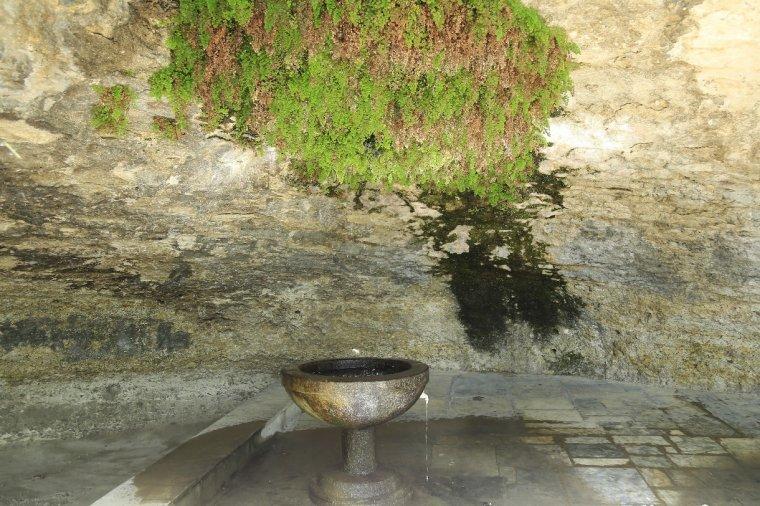Damjili. Eighth Wonder of the World

By Laman Ismayilova
Gazakh surprises with its wonderful rivers, beautiful woods, meadows and a lot of architectural places.
The region is famous for being home to many talented artists: poets, scientists, artists, and singers, has long been a cultural center in the region. Poets Molla Panakh Vagif, Vidadi, Samed Vurgun, Hussein Mehti were all born here.
In Gazakh, guests enjoy the architecture of the ancient mosque which still operates bath houses.
From the first centuries of the Millennium, this region had been a part of the Caucasian Albania. According to Roman historians here in Garayazi steppe, in the 1st century BC the Albanian army fought with formidable Roman legions led by Gnaeus Pompey. The people of Albania comprised a variety of ethnic groups, most of whom were Turkic. In 313 Albania adopted Christianity. There are several churches dated to the period of the Caucasian Albania.
The Stone Age settlement has also been found near the village of Shikhli. The black vessels from Baba-Dervish Eneolithic settlement (4-2 millennium BC) near the village of Demirchiler were decorated by the ancient artists thousand years ago. The excavation near Gazakhbeyli village in 1952 revealed an ancient settlement and a cemetery dated 8th-7th centuries BC. Burial mounds of the Bronze Age are still being found throughout the whole Gazakh region.
Damjili is the largest of the 30 caves of the Stone Age discovered on the territory of Gazakh region in mid 1950s.
Located at the foot of mount Avey, its area is about 460 square meters and the height is four meters. Damjili cave is the biggest cave among Avey Mountain caves.
The cave, opened in 1953 by Azerbaijani scientists Mahammadali Huseynov, is the first monument of the Stone Age discovered in Azerbaijan. It also has similarities with the ancient settlement of Goytepe of the Neolithic period, which is located in the neighboring Tovuz region.
The front side of the cave has been destroyed. The height of the cave's rear side is 4 m (13.1 ft).
A number of various stone tools, arrowheads, flint knives, bones of animals have been discovered during the excavations.
Traces of ochre were found in a grotto of the cave. The sediment layers, in which the ochre was found are mixed with more tardy ones which suggests that the use ochre dates back to the Mousterian culture.
Avey Mountain is one of the peaks in the Small Caucasus Mountains located between Georgia and Gazakh region.
There is an ancient Albanian temple on the top of the mountain. The word Avey is interpreted as a lunar house. "Ay" means "moon" and "ev" - "house", Avey - "house of the moon". Currently, access to the area is limited due to the proximity to front line.
Many temples, old settlements, ancient graveyards and about 30 artificial caves from Paleolithic times have been discovered on the slopes of the mountain. For this reason, the State Historical and Cultural Reserve Avey was set up here in 1989. Damjili cave is also one of the main sites of the reserve.
Another interesting point about Damjili cave is a spring with the same name. Azerbaijani poet Samad Vurghun once said that Damjili Spring is the 8th miracle of the world and the 1st one of Azerbaijan.
Spring trickles down from the flinty ceiling of the cave through narrow rocky splits. Water drops dripping from huge 1000 metre high rocks put you into a magical world of sounds.
Damjili cave camp holds a special place among ancient monuments.
Still wondering where to go during this hot summer season?
A holiday in Gazakh is considered by many to be among the most relaxing breaks on offer.
In summer, dozens of Gazakh residents and tourists come here to picnic.
The region is blessed with an abundance of astonishing landscapes and ancient monuments.
---
Laman Ismayilova is AzerNews’ staff journalist, follow her on Twitter: @Lam_Ismayilova
Follow us on Twitter @AzerNewsAz
Here we are to serve you with news right now. It does not cost much, but worth your attention.
Choose to support open, independent, quality journalism and subscribe on a monthly basis.
By subscribing to our online newspaper, you can have full digital access to all news, analysis, and much more.
You can also follow AzerNEWS on Twitter @AzerNewsAz or Facebook @AzerNewsNewspaper
Thank you!
